Additional protection for American armored vehicles
Even before mass production of fighter aircraft was launched tanks M3 GMC, fifty pre-production units went to strengthen the garrisons in the Philippines, which were already fighting with the Japanese. Of the new self-propelled guns, three Temporary Field Artillery Battalions were formed in November-December 1941. In December, for the first time, they took part in the battle. However, they could not fully reveal their potential, since the Japanese did not have serious tank weapons. But began to receive complaints about the high losses that the crews suffered from the rifle weapons the Japanese. The designers decided to redesign the shield - all the improvements ended for this. М3 GMC was originally developed as a transitional link for full-fledged tank destroyers.
Also unsuccessfully proved to be the American technology, which is in the hands of the allies. In November, the 1941 of about 170 Stewart’s M3 light tanks, which were in service with British forces, participated in the Crusaider operation. The German African corps of Rommel managed not only to demonstrate the inconsistency of the American technology, but also the flawed tactics of the British.
This was not a good start for American armored vehicles, but the developers were aware of the weaknesses of transitional weapons projects, so they continued to work on full-fledged projects.
In the end, the Americans managed to create a full-fledged tank. October 23 The 1942 of the British Army had new American tanks M4A1, which proved to be well under El Alamein.
The Americans themselves were able to evaluate the new Shermans only 6 December 1942, on the territory of Tunisia. Their results were much worse than those obtained by the British, but this can be explained by poor preparation of the US Army, and there were no serious complaints about the tanks themselves. However, it is worth noting that the remaining samples of the ACS and US tanks showed complete inconsistency. The main disadvantage of American armored vehicles was poor armor protection.
14 February 1943 Shermans first met the German PzKpfw VI Tiger 501 heavy tank battalion in Tunisia for the first time. It should be noted that among the American military there was an opinion that tanks should not fight with other tanks, therefore they did not learn any lessons from this collision. The American concept suggested that the tanks were to destroy mobile and lightly armored tank fighters, which at that time did not have powerful weapons. Paradoxically, but a fact - specially designed for fighting tanks, ACS were the least suited for the task. Moreover, Africa has brought Americans euphoria. According to the commander of the ground forces, General Leslie MacNeir, the M4А3 tank was met as the best on the battlefield at the moment — it combines perfect mobility, reliability, firepower and saving speed.
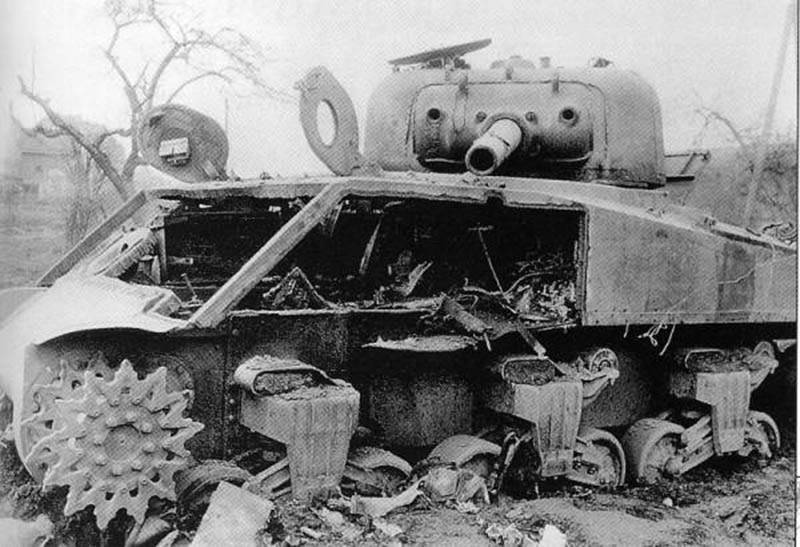
Thus, in the US Army, there were prerequisites for a tank disaster. During the fighting on the territory of Italy, the Americans began to increasingly meet heavy tanks Tiger and Panther, but they still believed that tanks did not need thick armor and a powerful gun. The concept of poorly protected tank destroyers remained unchanged. But not all US military adhered to this point of view. By the time of the landing in the Normandy, after a long dispute, the 76 mm long-barreled gun was adopted by the Sherman, and the standardization of the M36 tank fighters equipped with the 90 mm was almost completed. The military assumed that with the help of the new 76 mm guns it would be possible to confidently fight the Tigers.
There was no effective cannon to fight the Panther, but the command of the American army convinced itself that the Germans would not be able to start mass production of Panthers, and small quantities of Pz V could be destroyed with the help of flanking fire and bypass maneuvers. Many American generals believed that the 90 mm gun has excessive power, and therefore not needed. Armored armor US remained unchanged.
But this time it was not possible to do without a catastrophe. Having landed in Normandy, the Americans quickly realized that 76 mm does not give an opportunity to confidently hit the Tigers. Attempts to influence the situation with the help of the powerful 90 mm M36 guns also ended in failure, which enraged the commander of the allied forces Duyte Eisenhower. The troops did not have enough of these machines, and most importantly: the weak armor protection of the M36 tank destroyers did not allow to fully unlock the potential of 90 mm guns in Normandy. They even hit the German medium tanks, anti-tank and assault SAU.
Another shocking surprise was a large number of Panthers armed with the enemy. Their powerful gun and frontal armor did not leave the Americans any chance in duel clashes. Also, German soldiers widely and fairly successfully used hand-held anti-tank grenade launchers firing cumulative shells. As a result, the Allied offensive on the territory of Normandy began to choke. From that moment on, the unprecedented use of improvised means to increase the protection of armored vehicles began in the US military.
Trying to cope with the crisis that had arisen at the front, some American designers and top military officials began to push through the idea of a new heavy tank that would have a powerful gun and thick armor. But high-ranking conservative military, led by Leslie McNair, still believed that tanks should not fight tanks, so there is no need to put on them powerful weapons and thick armor - moreover, in their opinion, it was even harmful for them. They also believed that having received a well-armored tank, which possesses powerful weapons, tankers will begin to tie up unnecessary battles with German tank divisions. In the military design circles began a fierce discussion of the need to develop a new tank.
At the same time, the front-line soldiers began to attempt to cope with the catastrophic situation with their own forces, putting additional armor protection on armored vehicles. The commanders fully supported the desire of tankers to survive at any cost. In the various tank armies and divisions began to appear characteristic and unique types of additional protection. For example, the 7-I army developed, and later standardized, a set of hinged sandbags, which strengthened the frontal and side armor, as well as tower sides. These activities were widely disseminated in the 14 Tank Division of the 7 Army. There was another way, when reinforcements were welded to the forehead of the hull, formwork was made into which a thick concrete layer was poured.
Furious General George Patton heads to his headquarters after an impartial conversation with the crew of the M4A3X8 (76mm) from the 14 Panzer Division. The four-star general scolded the tank crew, because sandbags were hung on the tank. It is noteworthy that this additional protection was standardized in March in the 7 Army, but Patton did not want to reckon with this. The general believed that sandbags do not provide good protection, overload the car, which leads to premature breakdowns. When the 14 Tank Division of the 22-23 of April 1945 was transferred from the 7 Army to the 3 Army of Patton, the general personally forbade such methods of additional protection of tanks in his subordinate troops. But the tankers disagreed with the general in their views on sandbags and often simply ignored his order.
Sandbags were not available in Patton's 3 Army. Repair battalion specialists were able to convince him that sandbags are not the best solution. After cumulative ammunition fell into them, the explosive detonated, forming a cumulative jet before contact with the armor. In turn, she confidently pierced the armor of American cars. To create an effective protection against cumulative ammunition, a much greater distance was required between the armor and the point of operation of the projectile, and this was impossible to achieve with the help of sandbags. In addition, this scheme significantly increased the weight of the car, which had a negative impact on the suspension and powertrain. Therefore, in the 3 tank army, such additional protection was prohibited.
The fierce battles on the territory of Arden in January 1945 led to a new wave of discontent with the armor protection of the M4 Sherman tanks. In February, 1945, Patton tried to rectify the situation by ordering additional armor plates removed from wrecked tanks to be hung on the front of the hull, as well as on the turret. American tankers had to copy the German concept of differentiated Panther armor in the field.
The repair battalions of the 3 Tank Army began to carry out active armoring of tanks, but clearly could not cope with a similar amount of work. For these purposes three factories in Belgium were attracted, which were located near Bastogne. This modification affected Patton's three tank divisions: 4,6 and 11, an average of 36 tanks in each. The modified Shermans were well received in the troops, as their vitality greatly increased. The additional tank booking program was resumed in March of 1945, when Patton received a batch of wounded Shermans from the neighboring 7 army, from which armor was cut for installation on existing vehicles.
However, a similar scheme to strengthen the reservation was in conflict with the units that had passed into submission to Patton and were already protected with bags. Serious disagreements arose when the 7 tank division was transferred from the 14 Tank Army. However, tankers on the ground sometimes did not pay attention to the order of the commander.
The tank crews of the 9 Army welded on the forehead and sides of the hull, and sometimes on the tower, metal tracks, which were lined with sandbags. Then the whole structure was covered with a camouflage net.
The 1 Army practiced various methods of enhancing protection, depending on the unit. Crews used armor plates with padded equipment, rollers, sandbags and other improvised means.
Practical ubiquitous hanging tracked fragments to different parts of the hull of the tank.
It should be noted that from the film and photo chronicles it follows that the additional booking was almost not used on the light tanks of Chaffee and Stewart, as well as on artillery self-propelled guns.
Significant artisanal booking was used on the open turrets of tank destroyers М36 and М10. Although the open towers had an excellent overview, they practically did not provide protection against mortars and snipers. After active fighting in the city, it became obvious that they needed an armored roof of the tower. Constructive deficiencies corrected field repair shops - the open top partially or completely brewed. A standard sash armored roof began to install only after numerous requests from the front. It is worth noting that the MNNXX and M36 anti-tank ACSs had standard mounts for installing additional armor.
The only American tank on which no additional protection was installed was the TH26EXNNXX or M3 Pershing, which was considered heavy at the time. Twenty of these tanks passed combat tests in Europe as part of Operation Zebra.
The first Pershing, whose armor was pierced by a German projectile, was a tank under the number 38 and the on-board name "Fireball", assigned to company F of the 33 th tank regiment. This happened on February 26 1945 of the year near Elsdorf. Tiger's armor-piercing cannon managed to get into the embrasure of a coaxial machine gun from a distance of about one hundred meters. Killed gunner and loader.
The second Pershing, numbered 25, assigned to the H Company of the 33 Tank Regiment, was shot down in the town of Niel on the banks of the Rhine. An armor-piercing projectile 8.8 cm of the gun Nashorn managed to penetrate the lower frontal armor plate from a distance of about 275 meters, causing a fire in the turret. The crew managed to leave the car before the detonation of ammunition tore down the tower. This is the only time when Pershing's armor was punched in pure form.
The most non-standard armored model of American tanks is the T26E1-1 Super Pershing. The front of his body was reinforced with two layers of armor plates removed from the German Panthers.
After the start of full-scale clashes with the Japanese, there was a significant change in the idea of additional reservations. Now the main threat was carried not by enemy tanks, anti-tank guns, self-propelled guns and grenade launchers, but by infantry-shaped cumulative mines, as well as various blasting shells. Japanese infantrymen were getting close to the American tanks, using lush vegetation and mountainous terrain. Also, very often the American marines released the Shermans far ahead without the support of the infantry, which also played into the hands of the Japanese. As a result, a massive boarding of tanks began with boards. However, sometimes it only aggravated the situation, since the Japanese had a simple but very effective cumulative mine with spikes.
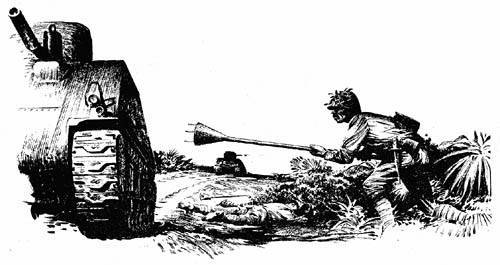
A cumulative jet pierced up to 6 inches of armor if the mine body was flush with the target surface. If the mine was at an angle of 60 degrees from the vertical to the surface of the target, then it would break through to 4 inches of armor.
"JAPANESE TANK AND ANTITANK WARFARE"
SPECIAL SERIES NO. Xnumx
1 AUGUST 1945
MILITARY INTELLIGENCE DIVISION
WAR DEPARTMENE WASHINGTON, DC
Very often fittings were welded to the sides, wooden formwork was installed, and concrete was poured inside. Sometimes a layer of planks was also added on top of the concrete.
To protect the horizontal surfaces of the tanks from the installation of mines, wire pins were used, which were welded to the hull and turret. They made the tank a kind of "hedgehog." Also used metal mesh, which was mounted on the engine compartment with a small gap. On top of it covered with sandbags.
It is worth noting that different units used their own additional booking options. Very often one glance at a tank was enough to determine which division it was assigned to.
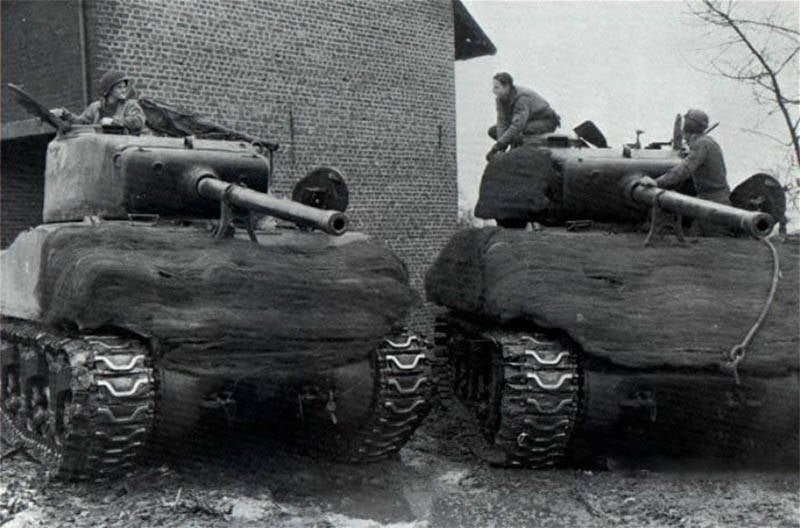
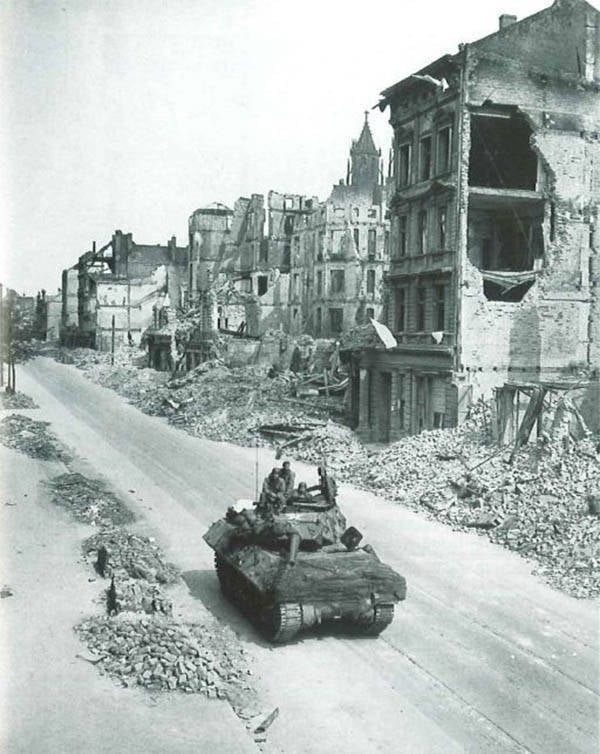
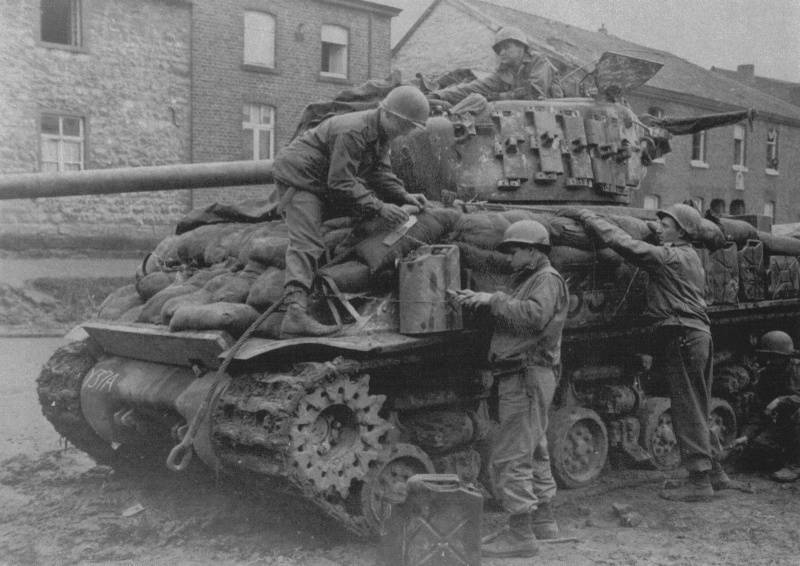
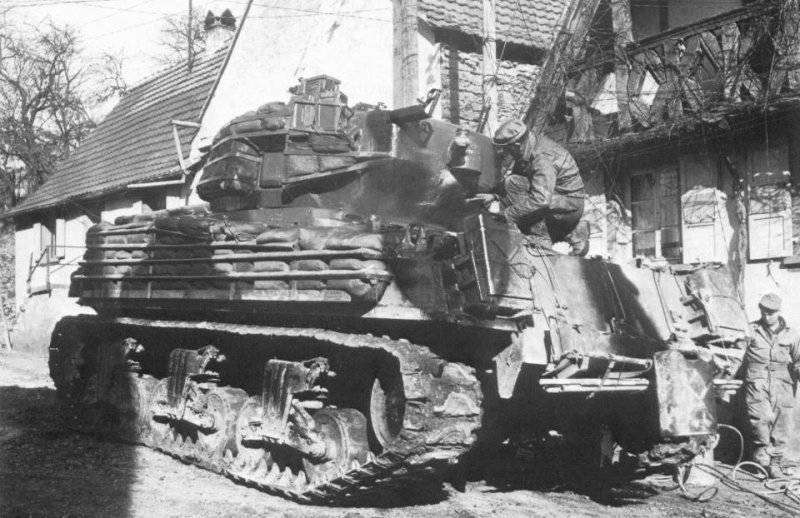 [/ Center]
[/ Center]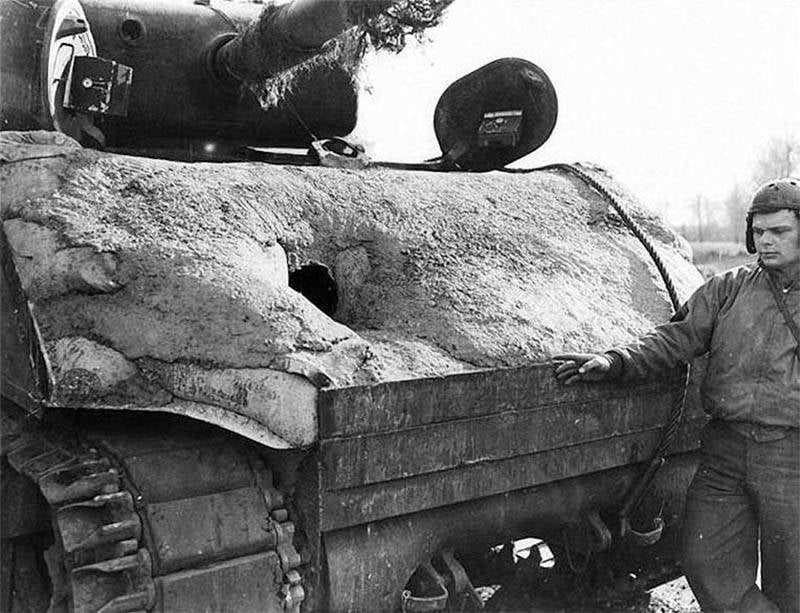
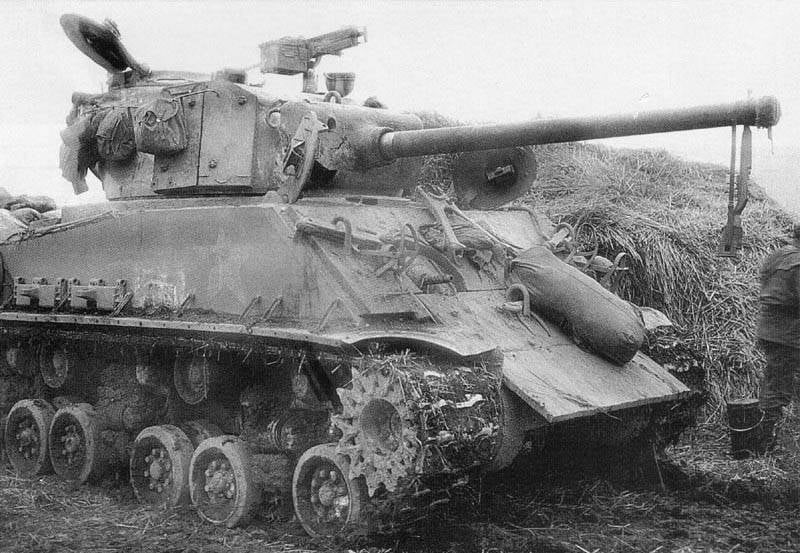
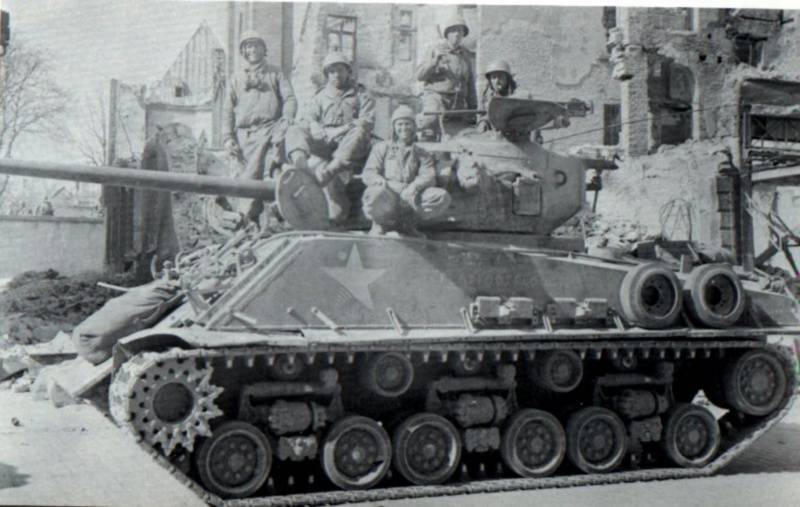
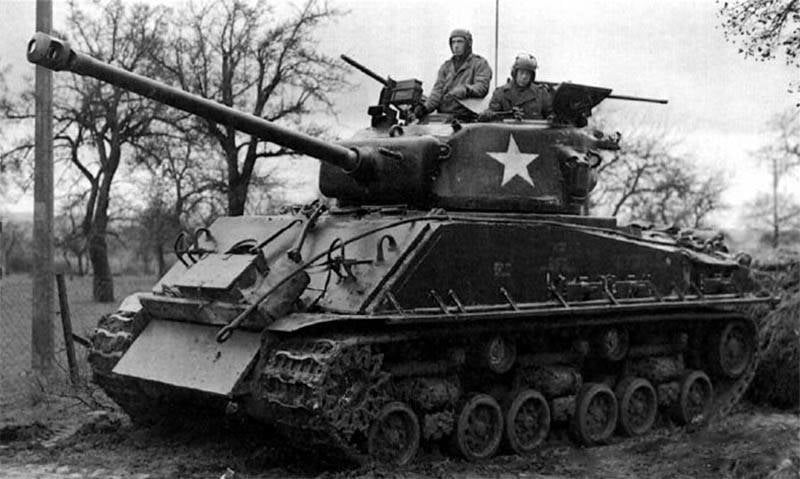
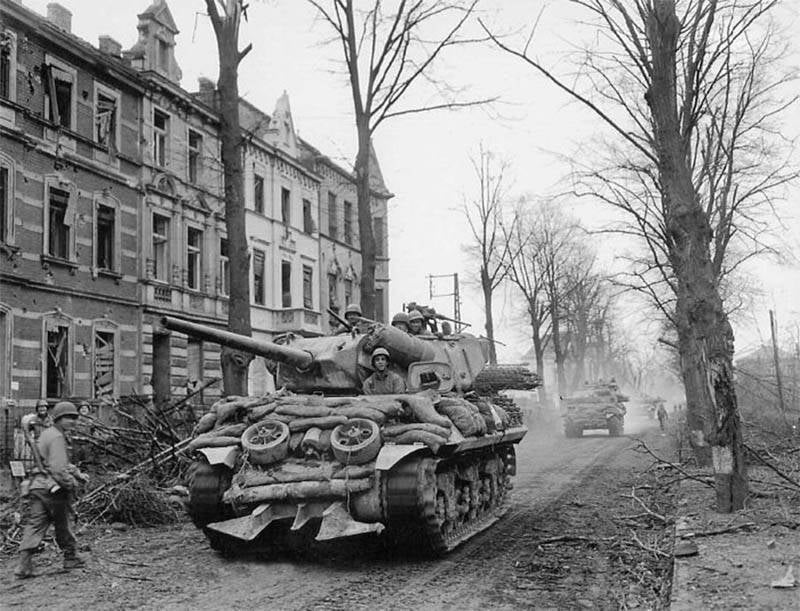
Pilot T26EX4 tank with a powerful 90mm T15EX1 gun. One of the two available prototypes was sent to Europe to test the battle against the German heaviest tank - the Royal Tiger. The repairmen of the 3 Tank Division, led by Belton Cooper, decided to strengthen the protection of the rare tank by hanging armor from the German Panther. The forehead of the hull is covered with a double layer of trophy rolled armor. [/ Center]
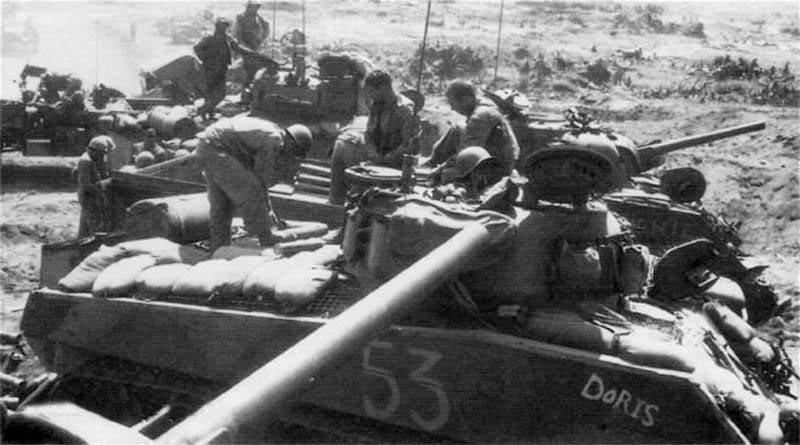
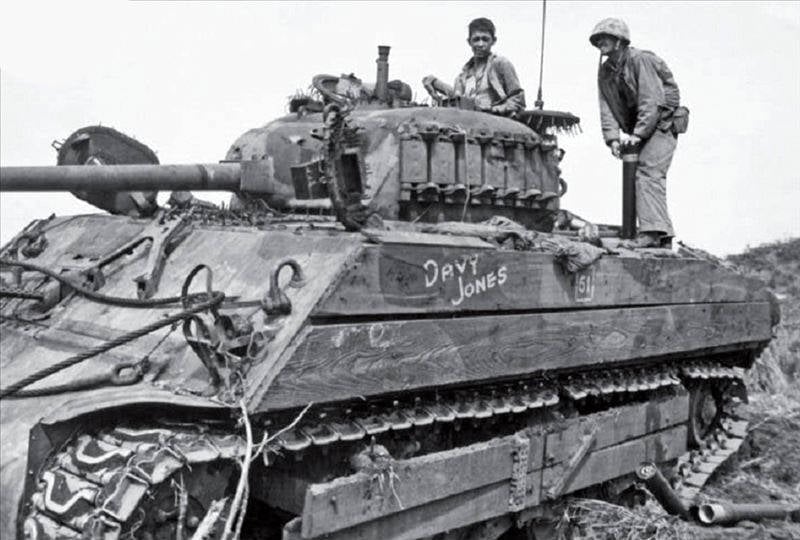
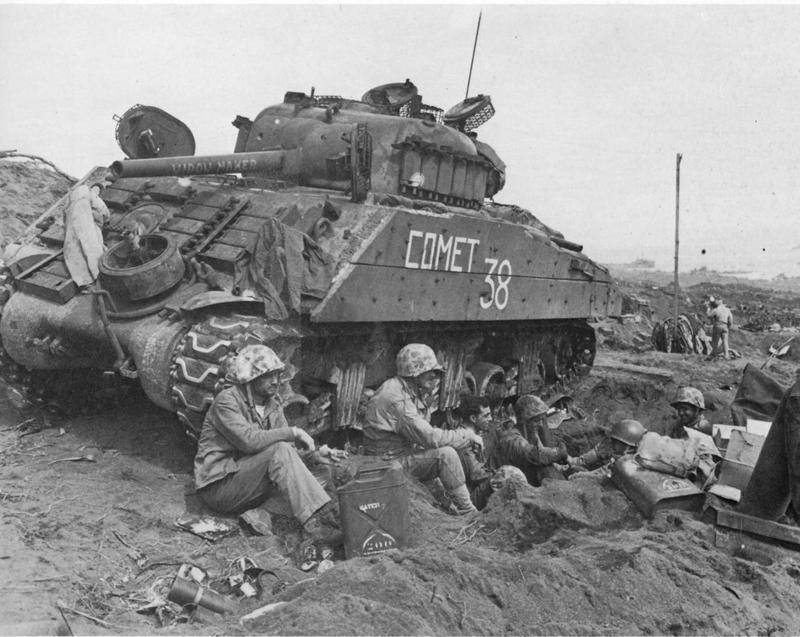
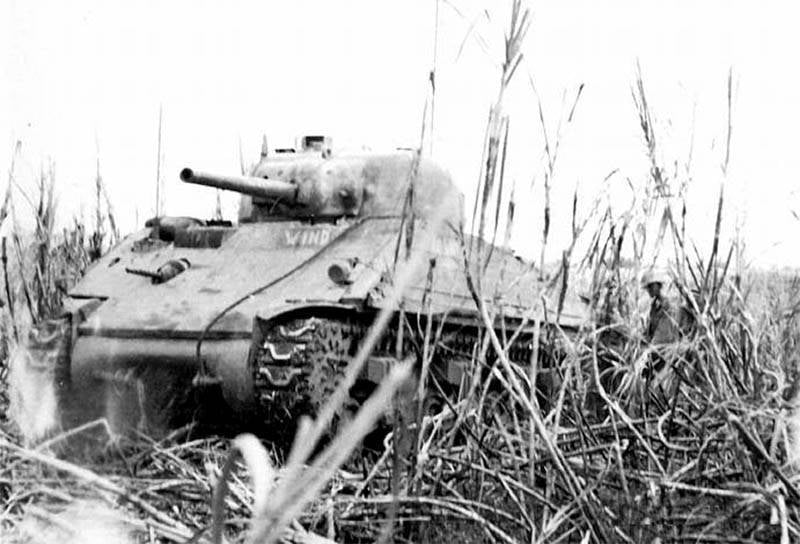
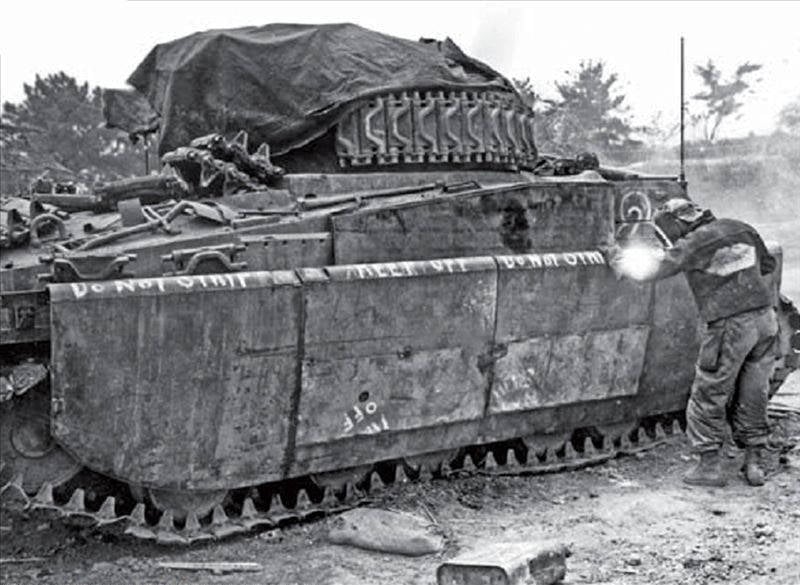
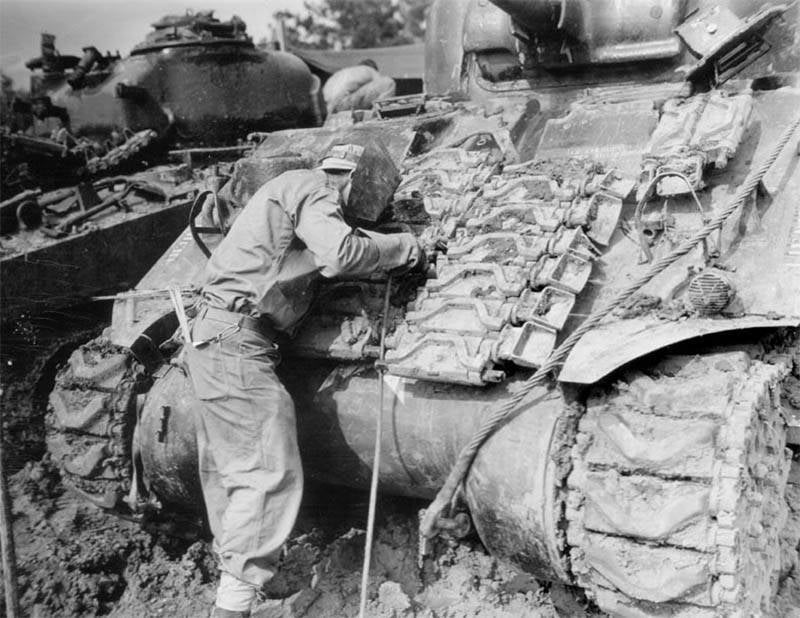
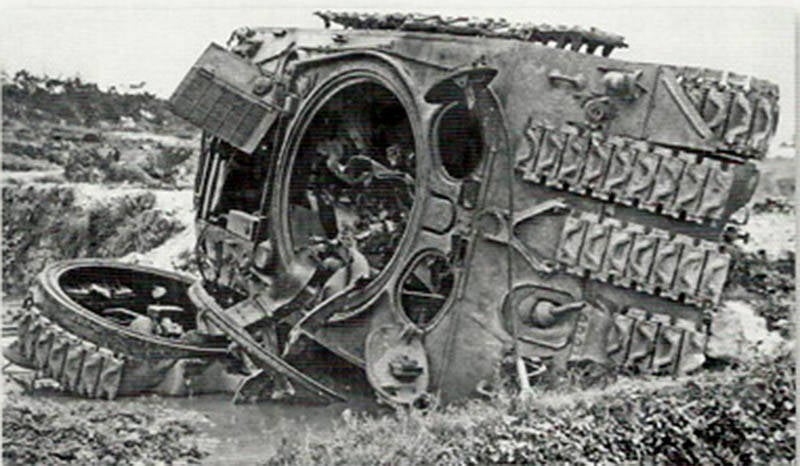
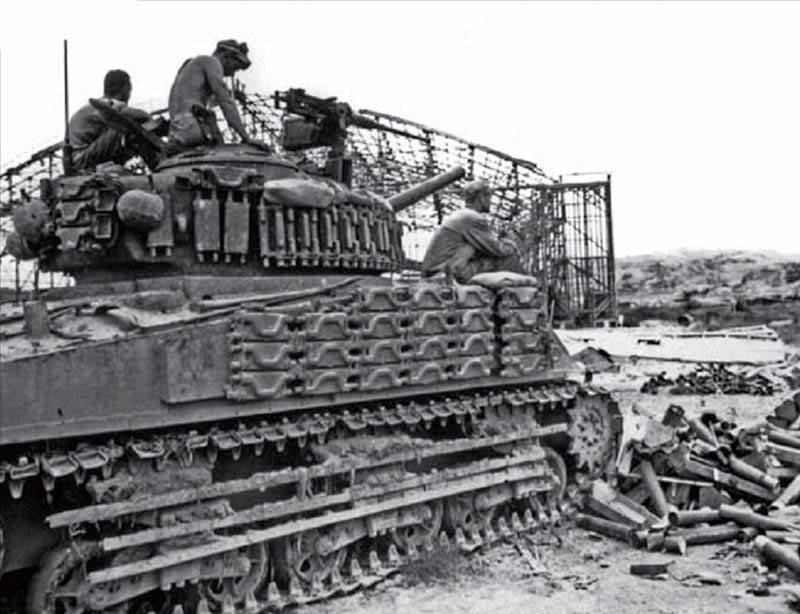
Sources:
David Doyle - Af Visual - LP 018, 2005
Andre R. Zbignewski - M3 and M4 Tanks in Pacific Combat. 1942-1945 - Kagero
Oscar E. Gilbert - Allied-Axies No.8. Marine Corps Shermans. - 2002, Ampersand Publishing Company, Inc.
Stiven Zaloga - US Tank Destroyers In Combat 1941-1945 - Concord, 7005, 1996
MILITARY INTELLIGENCE DIVISION - JAPANESE TANK AND ANTITANK WARFARE - SPECIAL SERIES NO. 34. 1 AUGUST 1945. WAR DEPARTMENE WASHINGTON, DC
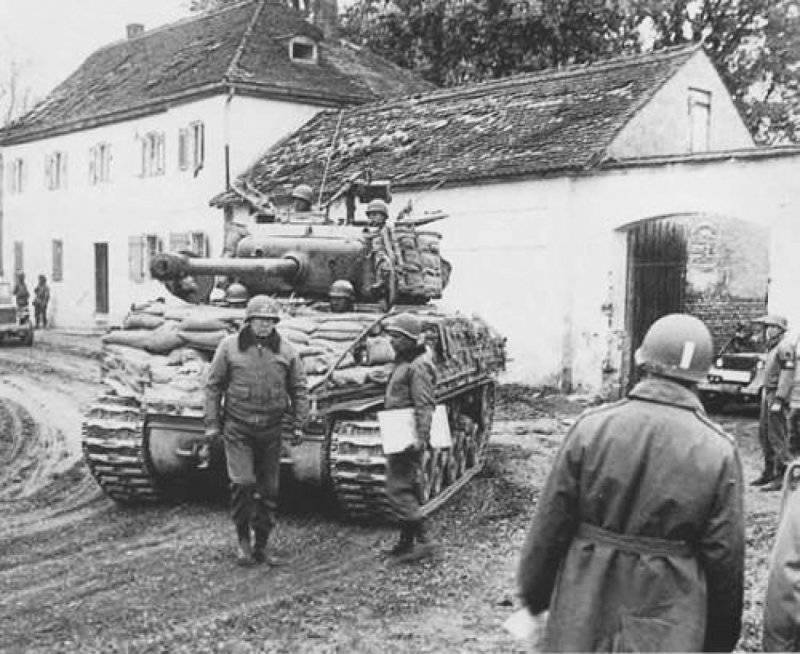
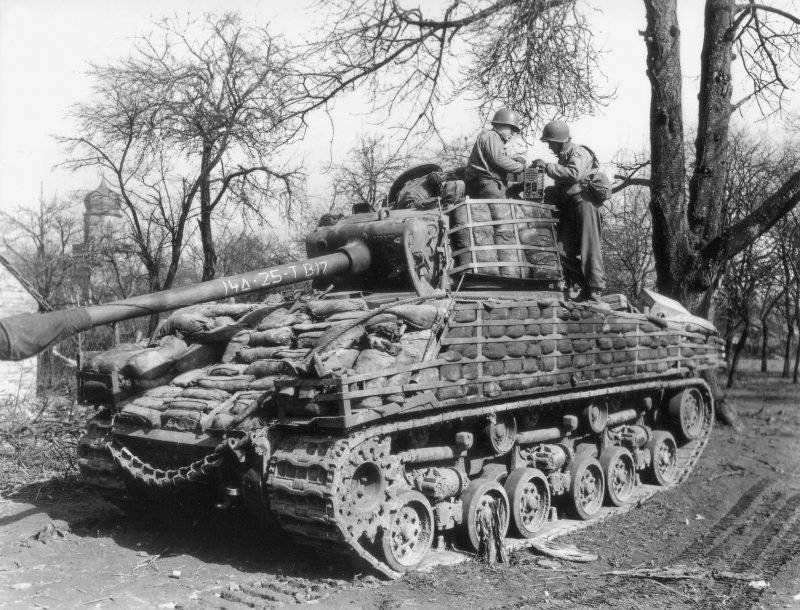
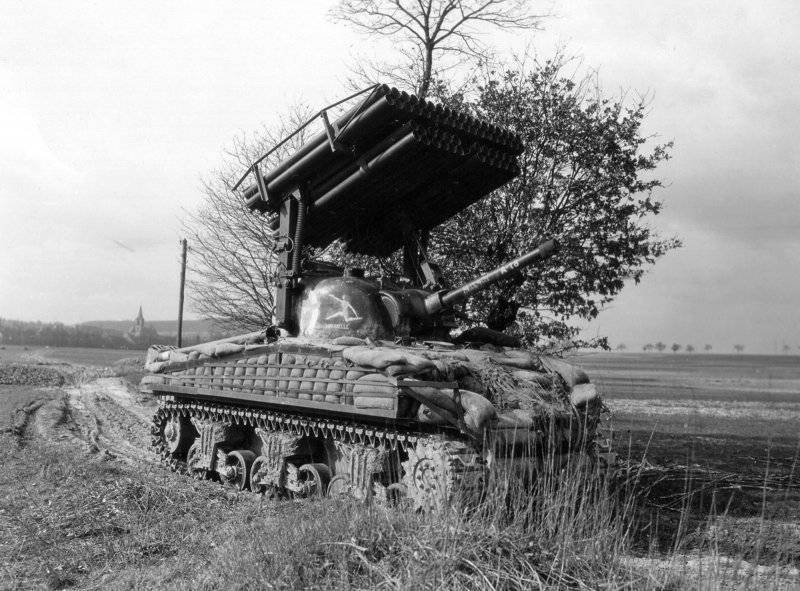
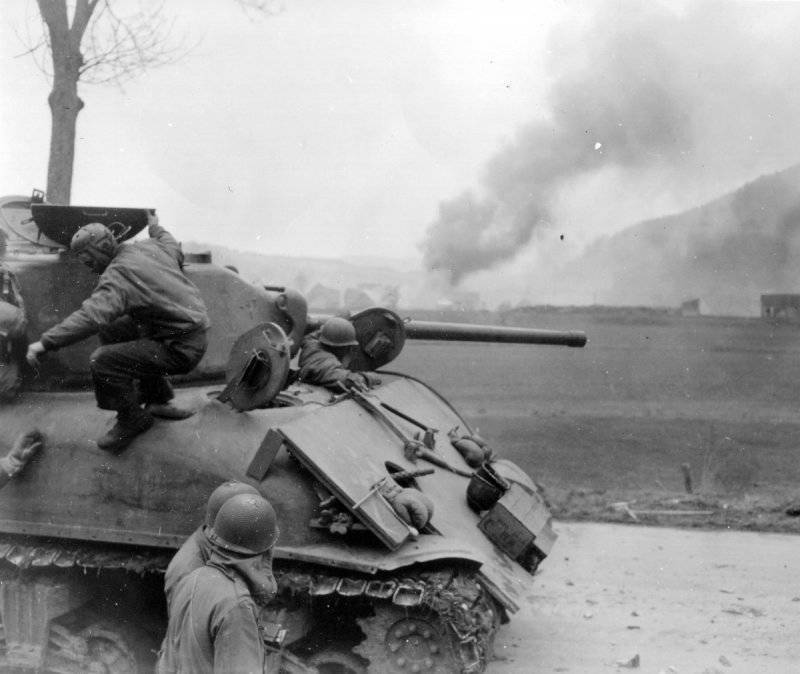
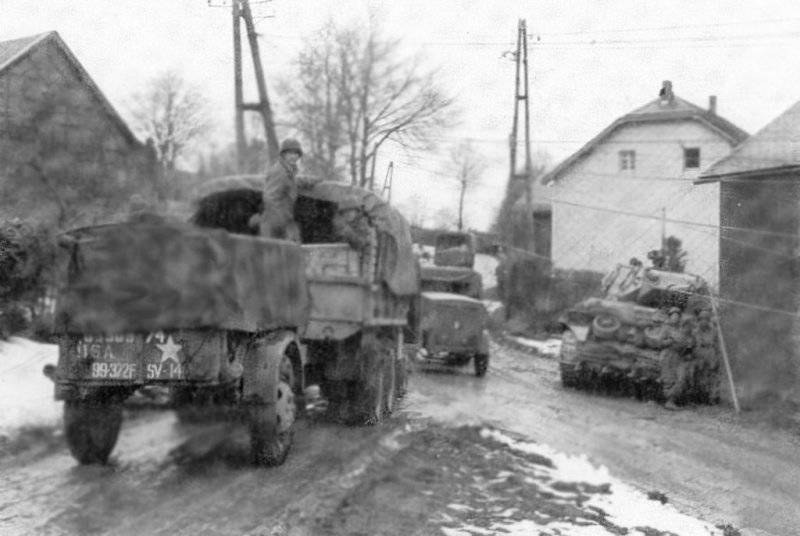
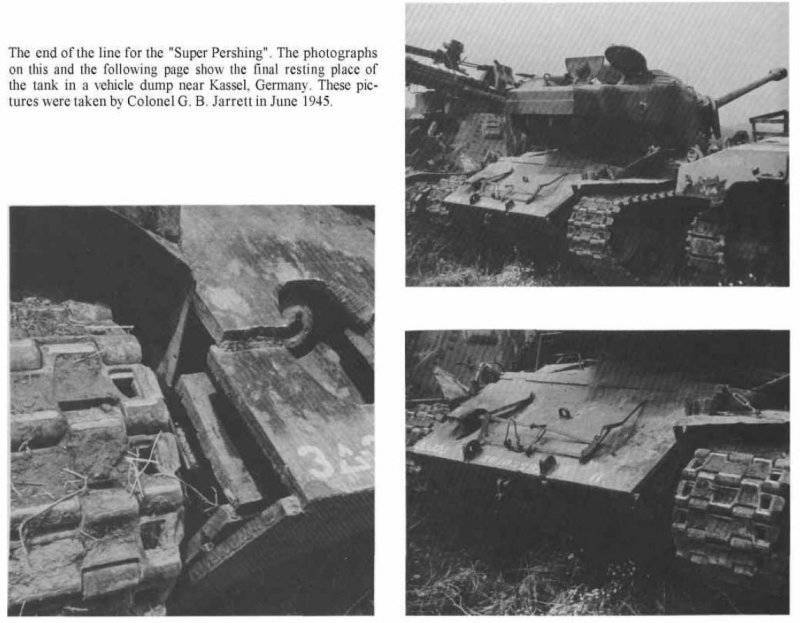
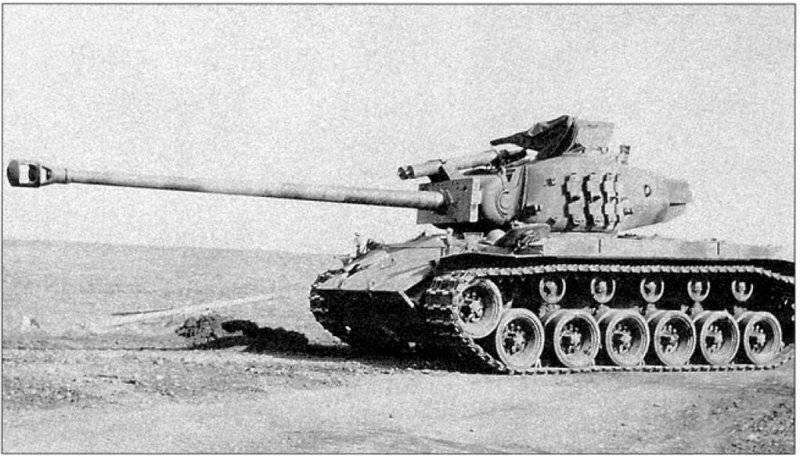
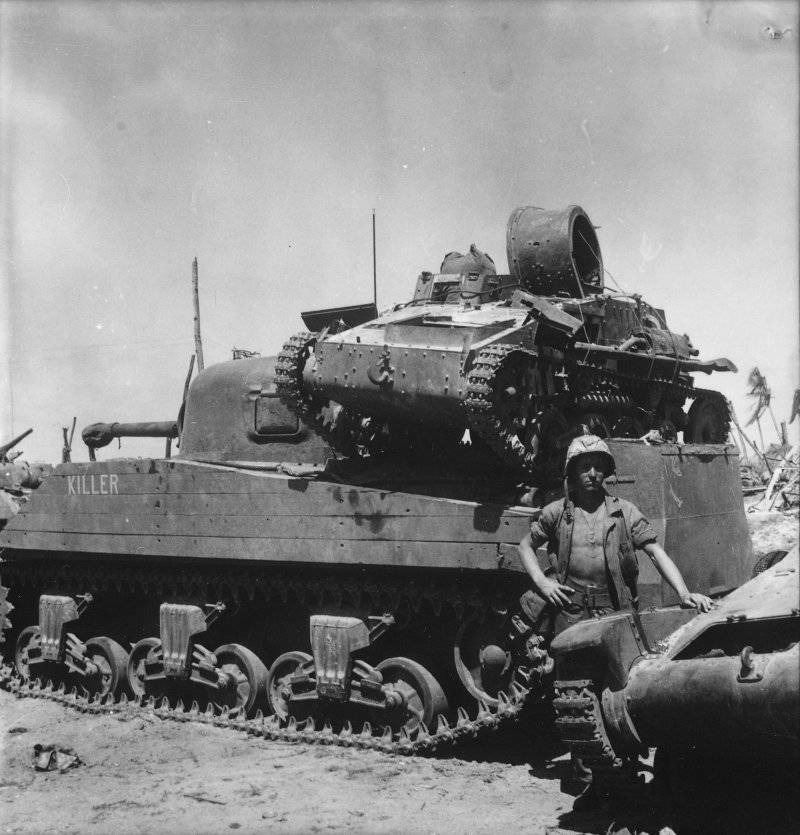
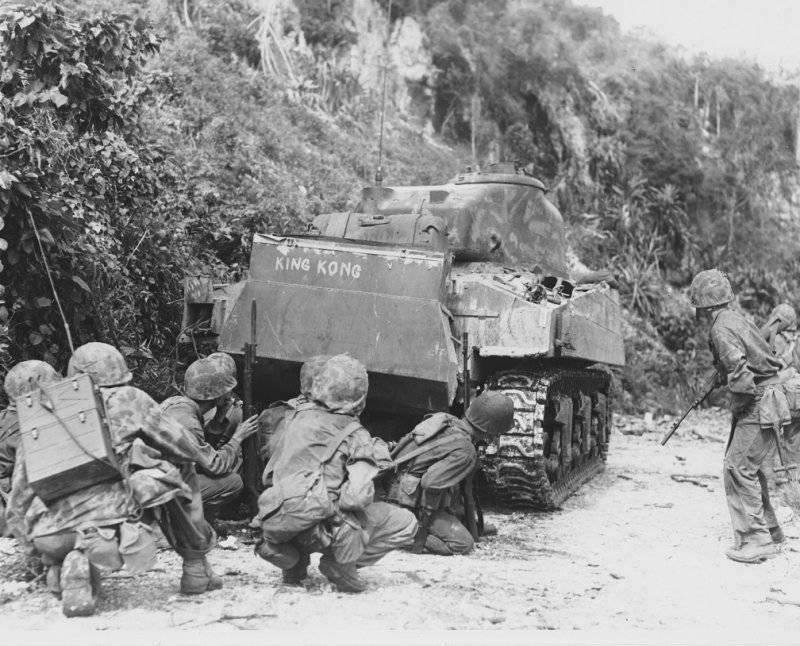



Information